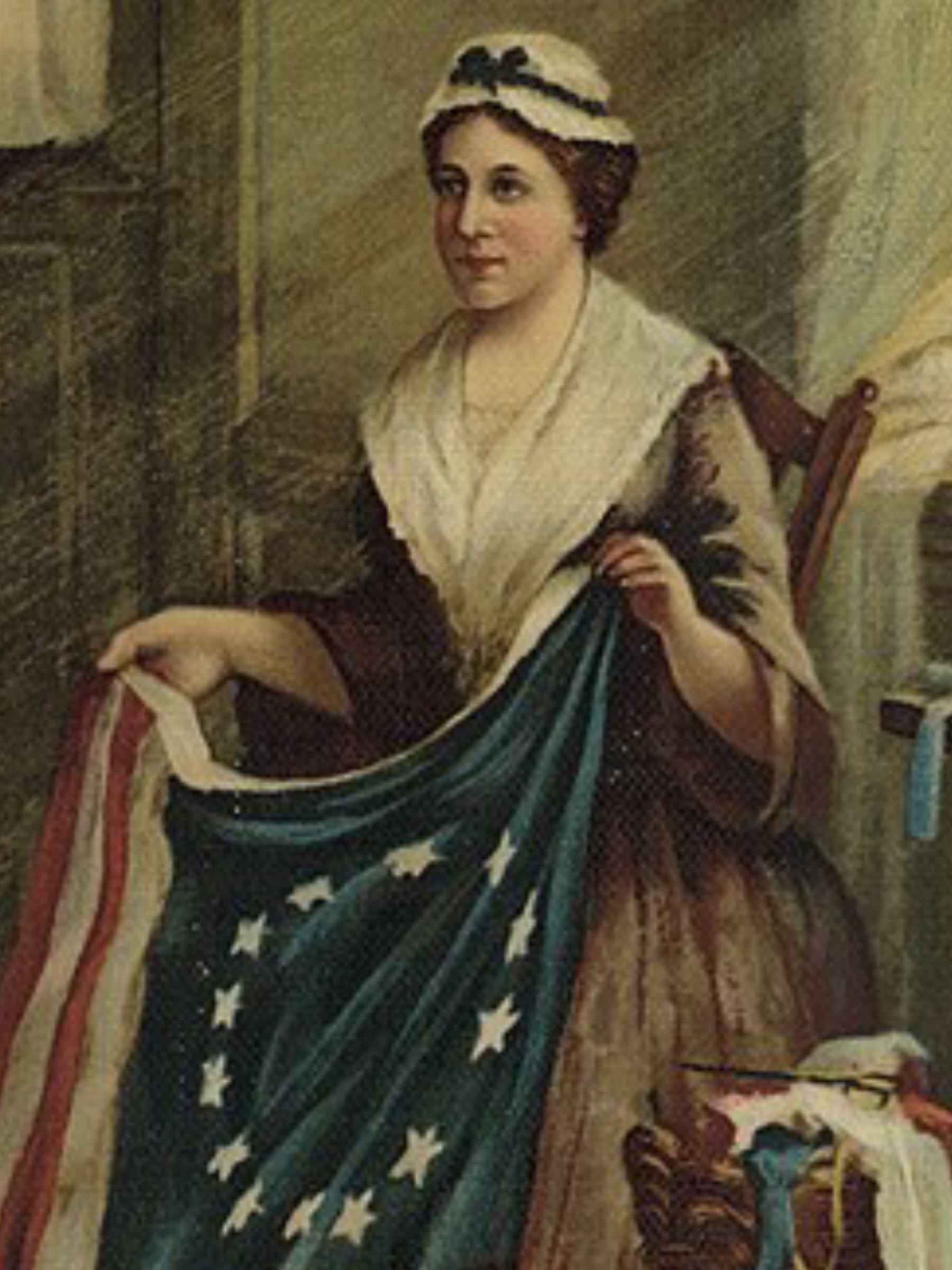Ladies of the Revolution
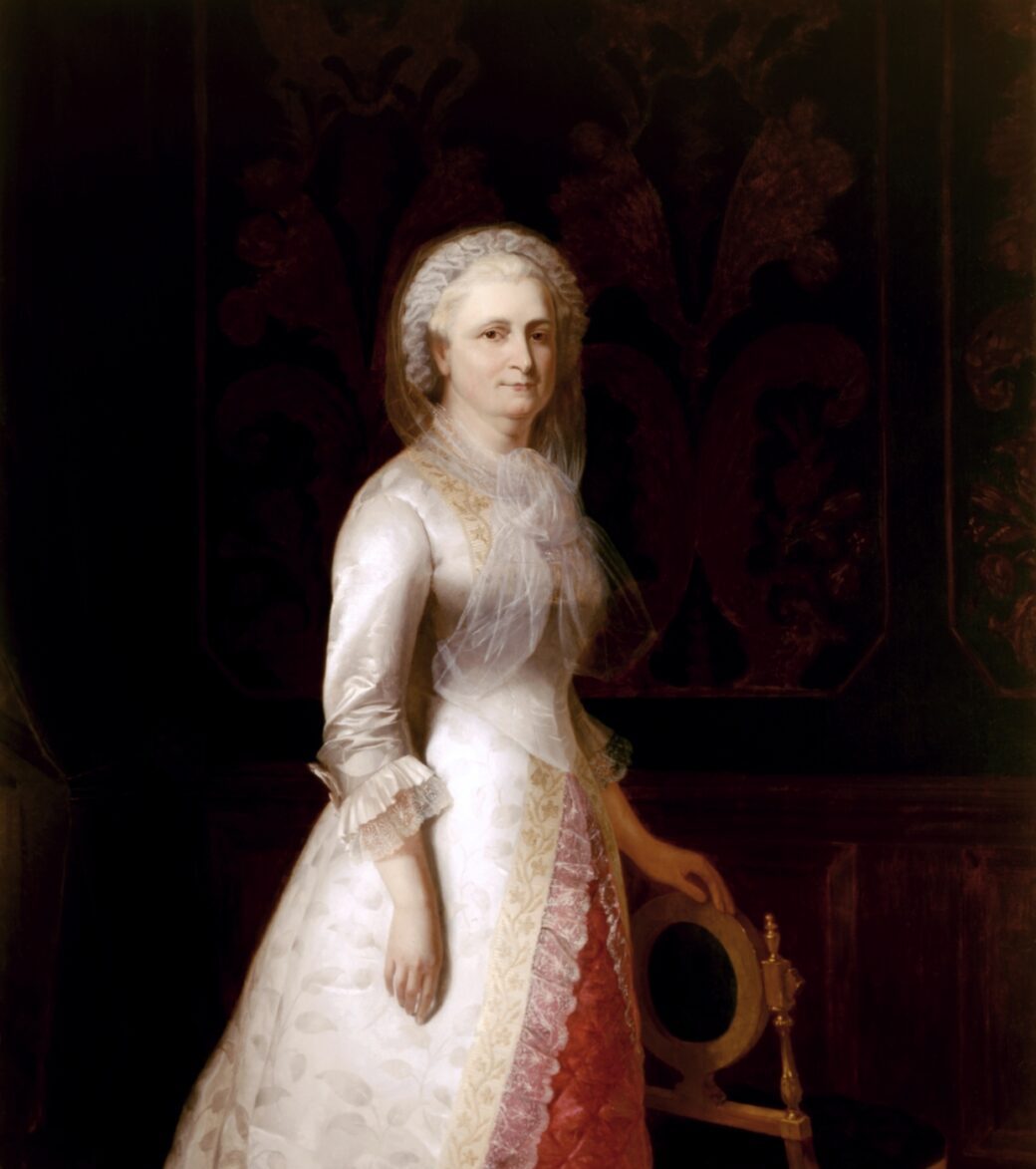
Martha Washington (1731-1802)

Wife, mother, property owner, and the “First Lady” of the United States, Martha Washington was known for her personal strength, devotion to her husband, and patient resolve during and after the war.
Born Martha Dandridge on June 2, 1731, she learned to read and write at a time when many women did not. Throughout her life, she read the Bible, novels, magazines, and frequently wrote letters. At age 18, Martha married Daniel Parke Custis, and they had four children, though only two survived infancy. Then, at age 26, Martha became a wealthy widow. In 1759, she married George Washington. She was about five feet tall and he stood over six feet and two inches tall, but she made up for her petite stature through her unflappable spirit.
When General Washington left Mount Vernon for military duties, Martha managed the household expertly. She spent the brutal winters of the Revolutionary War at the front with her husband. In addition to providing invaluable support to him, she mended socks, raised money for supplies, and boosted morale among the troops. Sadly, during this period, Martha lost her last living child, Jack, when he died of camp fever.
After winning the War of Independence, George Washington was elected the first president, and he and Martha began their next chapter of service to the new nation as America’s first couple. Known as “Lady Washington,” Martha set important social and political precedents like Friday receptions called “levees” in New York and Philadelphia.
After Washington retired from the presidency, he and Martha returned to Mount Vernon. Two years later, George died, and as her husband had wished, Martha freed his slaves. In 1802, two years later, Martha died. Today, America’s first couple are buried side by side at Mount Vernon.
Abigail Adams (1744 – 1818)

Advisor, writer, and trailblazer, Abigail Adams famously wrote to her husband John Adams to “remember the Ladies” as the Continental Congress gathered in 1776. She continued, “Do not put such unlimited power into the hands of the Husbands. Remember all Men would be tyrants if they could.”
Abigail was born on November 1122, 1744, in Massachusetts. She had no formal education, but was a voracious reader, and took advantage of her family’s library to master topics such as Shakespeare, philosophy, and ancient history. In 1762, she met a young lawyer, John Adams, who shared her intellectual interests. They married and had five children, including the future sixth president, John Quincy Adams. In 1762, she met a young lawyer, John Adams, who shared her intellectual interests. They married and had five children, including the future sixth president, John Quincy Adams.
Leading up to the Revolutionary War, John Adams was frequently away—and it was during this period that Abigail and John cultivated a lifelong correspondence. She gave her thoughts on everything from updates on the children to the need for colonial America to abolish slavery. She also ran the farm and the finances in Adam’s absence, keeping the family afloat through her thriftiness.
When John Adams became vice president and then second president of the United States in 1797, Abigail often joined him in New York, Philadelphia, and Washington, DC, taking on hostess duties.
The Adams family became the first “First Family” to live in the White House, and Abigail continued to advise her husband on political affairs. In fact, some called her “Mrs. President, suggesting she might have had too much influence.” When John Adams lost reelection in 1800, they moved to Quincy, and Abigail devoted herself to her family and son’s political career. She also resumed correspondence with Jefferson, though his political rivalry with her husband had pained her. In 1818, Abigail Adams died of typhoid fever, but her letters and legacy have forever shaped the American story.
Phyllis Wheatley (1753-1784)
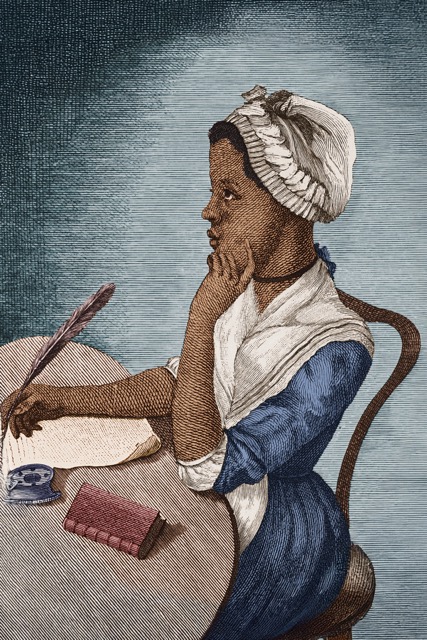
Groundbreaking poet Phillis Wheatley is considered the first African American woman, and only the third American woman, to publish a book of poems. Wheatley was renowned for her imagination, drive, and courage.
Born around 1753 in Africa, she was kidnapped at age seven and enslaved in Boston, Massachusetts, to the Wheatley family in 1761. She was named after the boat that brought her to the colony, “the Phillis.” The Wheatley family educated her, and within a remarkably short period after her arrival, she had a command of the Bible, Greek and Latin classics, British Literature, astronomy and geography. A prodigy, Wheatley grew in notoriety in 1770 after she published “An Elegiac Poem, on the Death of the Celebrated George Whitefield.”
In 1773, she traveled to London and published her first book of poems: Poems on Various Subjects, Religious and Moral. The first book published by an African American, its forward was signed by John Hancock and other Boston leaders—but not without first having to prove she was indeed the author because of her race and presumed illiteracy. Shortly after returning to Boston she was emancipated.
Wheatley embraced the elegy writing style, her African heritage, religion, and the American Revolution—but believed slavery was a roadblock to true freedom. At one point, she sent George Washington a well-received poem after his appointment as Commander of the Continental Army.
In 1778, Wheatley married John Peters, a free black man, and despite poverty and discrimination, continued writing. She tried to publish her second book, but failed. Because her husband was imprisoned for debt, Wheatley worked as a maid while continuing to write poetry to provide for her family. She had three children, though none survived. Wheatley died of an illness in 1784 at the age of 31.
Dolley Madison (1768-1849)

Dolley Madison, the fourth First Lady and wife of President James Madison, was known for her influence, determination, and energetic presence. A frequent entertainer, she helped shape the role of the First Lady from the earliest days of the presidency.
Born in 1768 in North Carolina, Dolley Madison was raised in a Quaker family in both Virginia and Philadelphia. In 1790, she married John Todd, Jr., a lawyer—though tragically, her husband and baby son died of yellow fever in 1793. She and her only remaining son John survived. One year later, when she was 26, Dolley married James Madison, who was 17 years her senior. In 1801, when Madison was appointed by President Thomas Jefferson to be Secretary of State, they moved to Washington, D.C. Since Jefferson’s wife had died, Dolley helped co-host sophisticated White House events, keeping with the standards of European politicians. She also played a vital role in fundraising for the Lewis and Clark expedition.
When James was elected president in 1808, Dolley began an illustrious tenure as First Lady: sponsoring the first inaugural ball and becoming the first wife of a president to formally associate herself with a public charity project, sponsoring the first ever home for orphaned girls in Washington, D.C. During the War of 1812, the British forces invaded Washington and set the White House on fire on August 24th, 1814. Dolley famously ordered the saving of historic documents, silver, and art—including a portrait of George Washington.
Despite her Quaker background, Dolley enjoyed playing cards, dipping snuff, and embracing fashion trends.
When Madison left the Presidency, he and Dolley returned to Montpelier. After his death, Dolley returned to Washington, D.C., where she remained a prominent figure in social and political circles and was the first private citizen to send a message through telegraph. In 1849, at age 81, Dolley Madison died.
Betsy Ross (1752-1836)
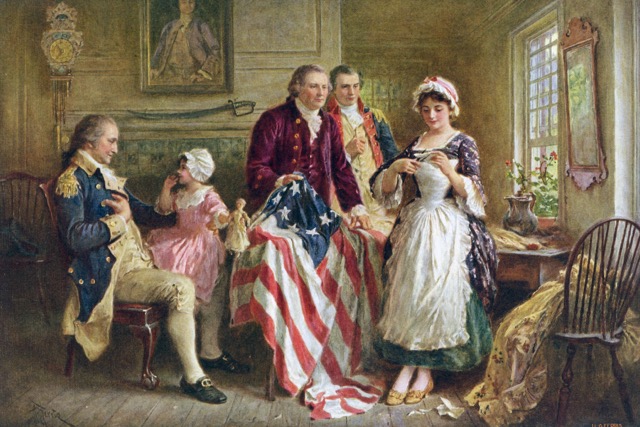
Betsy Ross is credited with stitching the first United States flag—a symbol of freedom that has since become the marker of American identity, patriotism and pride.
Born Elizabeth Griscom on January 1, 1752, in Gloucester City, New Jersey, Betsy Ross was the eighth of seventeen children (though only nine survived into adulthood) and was raised by a Quaker family in Philadelphia. After schooling, she apprenticed under John Webster, becoming a skilled seamstress and upholsterer. In 1773, she eloped with John Ross, which got her expelled from the Quaker community, since they did not approve of Betsy marrying a non-Quaker. Together, they ran an upholstery shop in Philadelphia, but John tragically died in 1776.
A widow at 24, Betsy continued running the shop—and according to legend, General George Washington, Robert Morris, and George Ross visited her in the summer of 1776. Washington showed her a sketch of a flag with thirteen red and white stripes and thirteen six-pointed stars and Betsy advised minor changes. This legend was made famous by her grandson William Canby in 1870 to the Pennsylvania Historical Society, and while there is no definitive evidence, Betsy and the American flag are now inextricably linked. Throughout the Revolutionary War, and for decades after, Betsy continued to make flags—many through government contracts. In 1811, for example, Betsy made over 50 garrison flags for the US Arsenal on the Schuylkill River.
In 1777, Betsy married a merchant sailor, Joseph Ashburn, and they had two daughters, but Joseph was captured by a British warship and died in a British prison in 1782. John Claypoole, a fellow Patriot who had been imprisoned with Joseph, visited Betsy to bring her the news that her husband had died. Over the course of the year, Betsy and John fell in love. They married and had five daughters , enjoying 34 years of marriage before John’s death in 1817. Betsy retired at the age of 76, completely blind, and died peacefully on January 30, 1836, shortly after her 84th birthday.
Mercy Otis Warren (1728-1814)
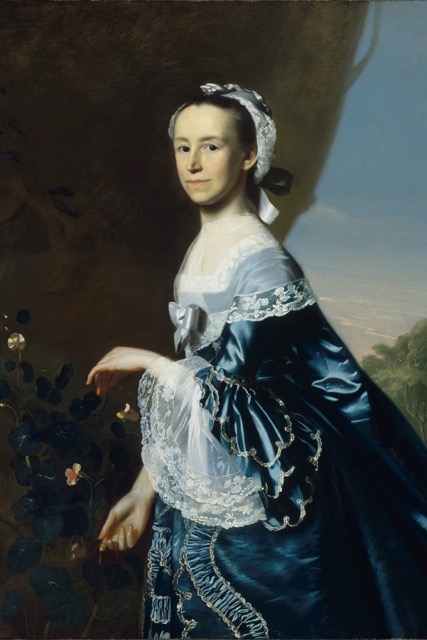
Known as the “Conscience of the Revolution,” and described as perhaps the most formidable female intellectual in eighteenth-century America, Mercy Otis Warren was a poet, historian, and playwright. She believed in the Revolution, and played an integral role in capturing, shaping, and moving the cause forward.
Born in 1728 in Barnstable, Massachusetts, Mercy Otis was the third of thirteen children, and the family’s oldest daughter. She grew up in a household where her intellectual and academic pursuits were encouraged,which was unusual for women at the time. She married James Warren, a politician, in 1754, and they had five sons. Defying custom and convention, Warren was openly political, engaging with many great figures and thinkers like John Adams, Abigail Adams, and Samuel Adams.
Patriotic, and writing anonymously, Warren published her satire, The Adulateur (1772), and two other plays, Defeat (1773), and The Group (1775)—each denouncing the British. She supported the Boston Tea Party and boycotts of British goods.
In 1790, using her real name, Warren was the third woman to publish a book of poems, behind Anne Bradstreet and Phillis Wheatley. In 1805, Warren also published History of the Rise, Progress, and Termination of the American Revolution—a three volume work that comprehensively captured the history leading toward Revolution. This was one of the first nonfiction books published by a woman in America.
She also denounced the institution of slavery because it could “banish a sense of general liberty.” And as an Anti-Federalist, she took a strong stand against ratification of the Constitution. At the age of 86, Warren died on October 19, 1814, in Massachusetts—leaving behind a legacy as a bold woman undeterred in telling the truth.




